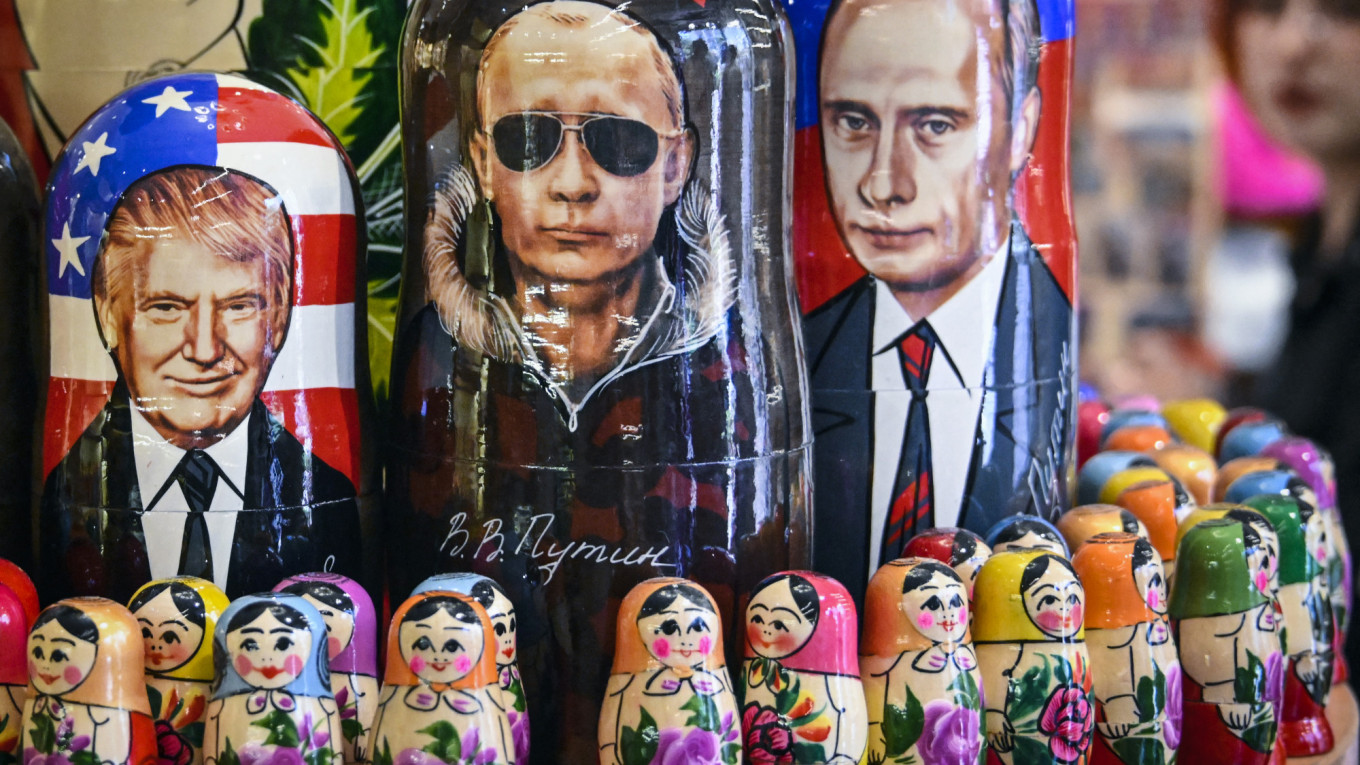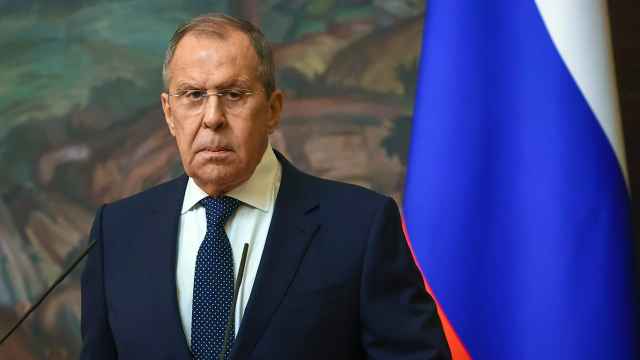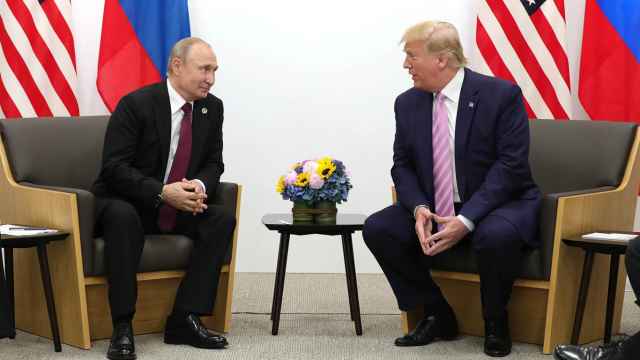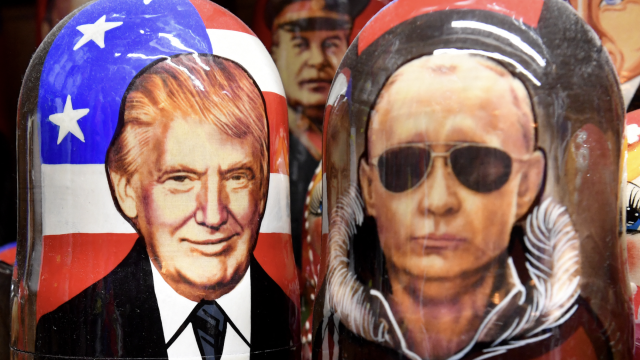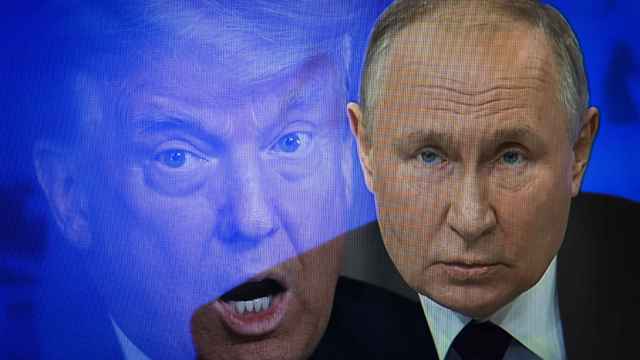The Trump-Putin summit on Friday is stirring up anger, anxiety and, in some quarters, hopes of a breakthrough. The prospect of the president of the United States welcoming Vladimir Putin, a war criminal with an outstanding International Criminal Court arrest warrant, to an American state that used to be Russian territory, is a shocking confirmation of Washington’s pivot away from its traditional allies and toward Moscow.
But to understand just how significant the event will be, even if it produces no agreement on Ukraine, it needs to be placed in the history of meetings between U.S. and Russian (or Soviet) leaders. That context shows that Friday’s summit is an extraordinary signal of the realignment of U.S. foreign policy under Trump and of the way that the administration’s lack of expertise and understanding is creating unprecedented advantages for the Kremlin.
Before the 2022 invasion of Ukraine, it was standard for new U.S. and Russian presidents to meet early in their terms to try to improve bilateral relations and address issues of concern to Washington. As the vastly more powerful state, the U.S. set the agenda. This was the case even when relations were poor, as has been the case at the start of every U.S. presidency since 2001.
When summits were held in periods of significant tension between Washington and Moscow, they took place on neutral ground in third-party states. This was true for Cold War meetings such as the 1986 Reagan-Gorbachev Helsinki summit; when George W. Bush and Putin met for the first time in Slovenia; and, most recently, when Biden and Putin met in Geneva in mid-2021.
Less high-profile, but still consequential, meetings often took place in the margins of multilateral events such as the G8 (before Russia’s 2014 expulsion) and the G20. Trump and Putin had their first official meeting during the 2017 G20 in Hamburg, in which Trump raised eyebrows by telling Putin it was “an honor” to meet him. Later, he held a second unofficial meeting with him without any U.S. officials present — something he repeated the following year at another G20 summit.
U.S.-Russia summits that take place in the U.S. or Russia have special significance. Where they are held in Russia, they are seen as conferring American recognition on the Kremlin. This was the reason that Clinton's 1995 visit to Moscow, at the height of Russia's murderous Chechen war, was so controversial.
But the summits that most strongly signal Washington’s intentions of recognition and friendship are the ones in which the United States president plays host. They convey important information to observers about the relationship — underscoring the end of hostilities or the strength of U.S. support for the Russian government.
The image of Gorbachev and George H. W. Bush playing horseshoes at Camp David in 1990 was a powerful symbol of the end of Cold War tensions, while the Clinton-Yeltsin meetings in 1994 and 1995 were designed to show support and respect for the beleaguered leader of the new Russian Federation.
George W. Bush’s hosting of Putin in Texas in November 2001 and Medvedev’s 2010 visit to Washington signaled the renewal of U.S.-Russia relations through strong personal ties between the presidents.
The 2010 meeting was the last event, outside multilateral events such as the UN or APEC, to take place on U.S. soil. After Russia's annexation of Crimea, 2016 election interference, and its full-scale invasion of Ukraine in 2022, the idea of the president of the United States hosting Putin became unthinkable.
That changed with the reelection of Donald Trump. By inviting Putin to the U.S., the Trump administration is making clear its desire to have good relations with Russia, seemingly at any cost. It is the clearest sign yet of the realignment of the U.S. under the Trump administration away from allies and toward the Kremlin, a move that Trump has been signaling for many years.
Trump has been sensitive about his relationship with Russia since his first term, dwelling obsessively on the so-called “Russia hoax,” and claiming that “nobody has been tougher on Russia” than him. Despite these longstanding attempts to play down the issue, Trump’s affinity for Russia in general and Putin in particular has been one of the most consistent elements of his approach to foreign affairs, stretching back to the period before his election in 2016.
Since he returned to the White House in January, his administration has moved sharply and brutally away from support for Ukraine and — despite attempts to paper over the cracks — from 80 years of alliance with Europe. In contrast, despite occasional expressions of disappointment and recent vaguely worded threats, the Trump administration has avoided taking any action against Russia. Instead, they have indicated that they want a wide-ranging reset of relations. Combined with the threats against Canada and Denmark, the withdrawal of support for Ukraine and the (at best) uncertainty over the solidity of Washington’s commitment to NATO, it represents a realignment of the U.S. away from its democratic partners of 80 years and toward an aggressive, authoritarian Russia.
But while the summit is a clear signal of the shift in U.S. foreign policy, it is also an indicator of the way that foreign policymaking has collapsed into chaos and incompetence since Trump’s return to office.
One of the strangest things about the Alaska summit is its impromptu character. Typically, summits are the end result of many months of planning and negotiations. No details are left to chance or the last minute; the agenda and the wording of a summit communiqué are finalised long before the leaders meet. None of that seems to have happened here.
In July, Trump threatened Russia with “very severe tariffs” within 50 days. He then revised that deadline to 10-12 days, finally fixing on a seemingly hard deadline of Aug. 8, for Russia to make some kind of vaguely outlined move to end the war — although what he expected Putin to do remained vague. Despite the absence of any positive moves by Russia, the White House used the day they were expected to punish the Kremlin to announce the Alaska summit.
The last-minute nature of the meeting is clear from the fact that many of its details, including its location, were unspecified at the time of announcement. The fact that the White House is already downplaying the summit and has become even more vague about its purpose is another indication that the event has not been well-organised. It strengthens the impression that its announcement was an attempt to deflect attention from awkward questions about the administration’s failure to sanction Russia — and perhaps even more uncomfortable news stories such as the Epstein scandal.
Secretary of State Marco Rubio, who was a strong critic of Russian aggression before joining the Trump administration, has said that “for President Trump, a meeting is not a concession”. If Trump — a man preoccupied with his own status and recognition — genuinely does not understand the significance of inviting the Russian president to the U.S., then that is in itself a worrying indication of how far Trump is out of his depth in his dealings with Moscow.
It is also likely to be a consequence of the implosion of his administration’s U.S. foreign policymaking, having hollowed out the State Department and the National Security Council, removed or sidelined experts and replaced them with well-connected individuals with no background in diplomacy and little understanding of the sensitive and complex tasks they are being asked to perform.
Trump’s envoy Steve Witkoff, in particular, is widely seen as out of his depth. Recent reports make highly embarrassing claims about his failure to understand the details of negotiations with Russia.
The chaos and incompetence of Trump's foreign policy — sometimes optimistically, but wrongly, badged as an unpredictability doctrine — presents an extraordinary opportunity for Russia.
Even if Trump does not understand the significance of inviting Putin to the U.S. for talks, the Kremlin certainly does. Since 2014, and especially following his 2022 invasion of Ukraine, Putin has been denied the recognition that comes from big diplomatic events with Western states. Now, having repeatedly tried and failed to persuade other leaders to readmit Russia to the G8, Trump has provided Putin with one of the most prestigious of all diplomatic platforms.
The weakening of Washington’s foreign and security expertise, combined with the administration’s pro-Russia orientation, puts the Kremlin in a stronger position than it has ever been before in relation to the White House.
U.S.-Russia summits have traditionally signaled the lessening of tensions and laid the foundations for a more stable and secure environment. That will not be true in this case.
The U.S.’s humiliation in Alaska should be a final wake-up call for those NATO members reluctant to confront the reality of the changed nature of relations with Washington. Recognizing that could be the basis for building stronger ties with Ukraine and defenses against the threat from Russia.
A Message from The Moscow Times:
Dear readers,
We are facing unprecedented challenges. Russia's Prosecutor General's Office has designated The Moscow Times as an "undesirable" organization, criminalizing our work and putting our staff at risk of prosecution. This follows our earlier unjust labeling as a "foreign agent."
These actions are direct attempts to silence independent journalism in Russia. The authorities claim our work "discredits the decisions of the Russian leadership." We see things differently: we strive to provide accurate, unbiased reporting on Russia.
We, the journalists of The Moscow Times, refuse to be silenced. But to continue our work, we need your help.
Your support, no matter how small, makes a world of difference. If you can, please support us monthly starting from just $2. It's quick to set up, and every contribution makes a significant impact.
By supporting The Moscow Times, you're defending open, independent journalism in the face of repression. Thank you for standing with us.
Remind me later.


